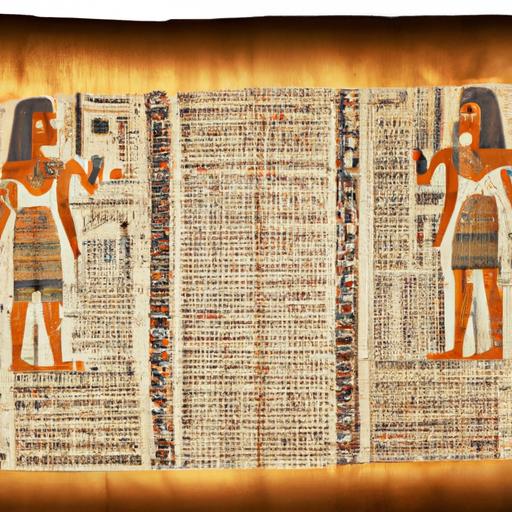Why was Paper Invented?
Table of Contents
Introduction

From writing notes to printing books, paper has become an essential part of our daily life. The invention of paper has revolutionised the way we communicate and share information with each other. Paper is a versatile and inexpensive material that has made it possible for us to record our history and preserve our culture. But have you ever wondered why paper was invented in the first place? In this article, we will explore the history of paper, the reasons behind its invention, and its impact on society.
The Need for Writing Materials in Ancient Times
Before the invention of paper, people used various materials to write on. Cave walls, animal hides, papyrus, and bamboo strips were some of the earliest forms of writing materials. However, these materials had limitations. Cave walls were permanent but difficult to move, while animal hides were portable but perishable. Papyrus was fragile and prone to damage while bamboo strips were heavy and cumbersome.
As the demand for more efficient writing materials grew, the need for a better solution became apparent. The ancient Egyptians used papyrus, which was made from the reeds that grew along the Nile River. However, the Chinese were the first to invent paper. They needed a material that was lightweight, durable, and easy to produce.
The Chinese experimented with various materials, including silk, but silk was expensive and time-consuming to produce. Eventually, they discovered that a mixture of mulberry bark, hemp, and rags could be beaten into a pulp and pressed into thin sheets. This was the birth of paper, which quickly became a valuable commodity in China.
The Invention of Paper in China
Paper was invented during the Han Dynasty (206 BCE – 220 CE) in China. The exact date of its invention is unknown, but it is believed to have been invented by a eunuch named Cai Lun. He was a court official who was tasked with finding a new writing material. Cai Lun experimented with various materials and eventually discovered that a mixture of mulberry bark, hemp, and rags could be beaten into a pulp and pressed into thin sheets. This was the beginning of paper.
The process of making paper was refined over time, and the Chinese kept the technology a closely guarded secret. However, the secret eventually leaked, and paper-making technology spread to other parts of the world. The first paper mill in Europe was established in Spain in the 12th century, and by the 15th century, paper mills had spread throughout Europe.
The Invention of Paper in China (continued)
The process of making paper in ancient China was a complex and time-consuming task. First, the raw materials, such as mulberry bark, hemp, and rags, were soaked in water for several days until they were soft. Then the materials were beaten into a pulp using a large stone mortar and pestle. The pulp was then spread evenly on a bamboo screen and allowed to dry in the sun. Once dry, the paper was peeled off the screen and smoothed with a stone. The finished product was a thin, lightweight sheet of paper that was strong and durable.
Paper-making technology eventually spread to Korea and Japan, who further refined the process. The spread of paper-making technology had a significant impact on the world. It allowed for the mass production of books, which led to an increase in literacy and the spread of knowledge. It also made it possible to create maps, newspapers, and other printed materials that were essential for commerce and communication.
Advantages of Paper over Other Writing Materials
Paper quickly became the preferred writing material because of its many advantages over other writing materials. One of the most significant advantages of paper is its durability and portability. Unlike cave walls and animal hides, paper is lightweight and easy to carry. This made it possible for people to record their thoughts and ideas on the go.
Another advantage of paper is its affordability and accessibility. Before the invention of paper, writing materials were expensive and difficult to obtain. Papyrus, for example, could only be obtained from Egypt. Paper, on the other hand, could be made from locally sourced materials, making it more affordable and accessible.
Paper is also versatile and convenient. It can be used for a wide range of applications, from writing notes to printing books. It can be easily folded, cut, and bound, making it ideal for creating books, newspapers, and other printed materials.
In conclusion, the invention of paper revolutionized the way we communicate and share information with each other. Paper-making technology has come a long way since its inception in ancient China, but the advantages of paper over other writing materials remain the same.
Paper as a Catalyst for Knowledge and Culture
Paper has played a significant role in the development of education, literacy, and the spread of knowledge. Before the invention of paper, books were hand-copied, and only a few copies were available. Paper made it possible to produce books in greater quantities, making them more affordable and accessible to people. This led to a surge in literacy rates and an increase in education. With the spread of paper-making technology, books became more widely available, and knowledge was no longer limited to the privileged few.
Paper also played a crucial role in the spread of ideas and knowledge. Books, newspapers, and magazines printed on paper have been instrumental in shaping public opinion and influencing society. Paper has been a powerful tool in the dissemination of information, and it has helped to create a more informed and connected world.
Moreover, paper has significant cultural significance. In many cultures, paper is used for religious purposes, such as writing scripture and prayer books. In some cultures, paper is used for art, such as origami and calligraphy. The beauty and versatility of paper have inspired artists and created a unique place in various cultures worldwide.
Conclusion
In conclusion, paper has been an essential part of human history and has played a significant role in the development of our society. The invention of paper has revolutionised the way we communicate and share information with each other. Paper has made it possible for us to record our history and preserve our culture.
The impact of paper on education, literacy, and the spread of knowledge cannot be overstated. Paper has been a catalyst for the growth of education, and it has helped to create a more informed and connected world. Furthermore, paper has significant cultural significance, which has inspired artists and created a unique place in various cultures worldwide.
As we move into the digital age, the importance of paper may diminish, but it will never disappear. The future of paper technology is exciting, and it will continue to evolve to meet the needs of our society. Paper will always hold a special place in our hearts and remain an essential part of our history and culture.

